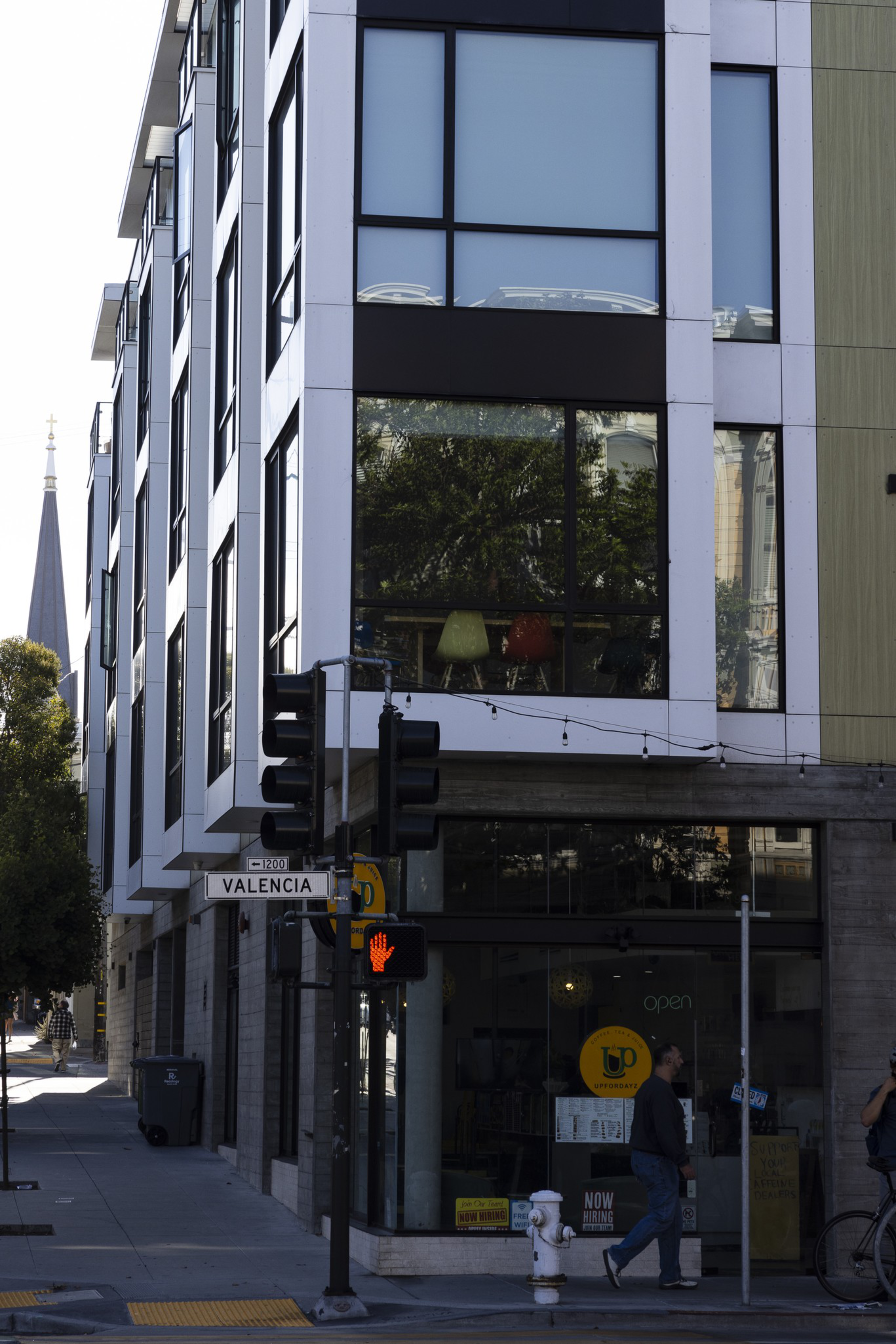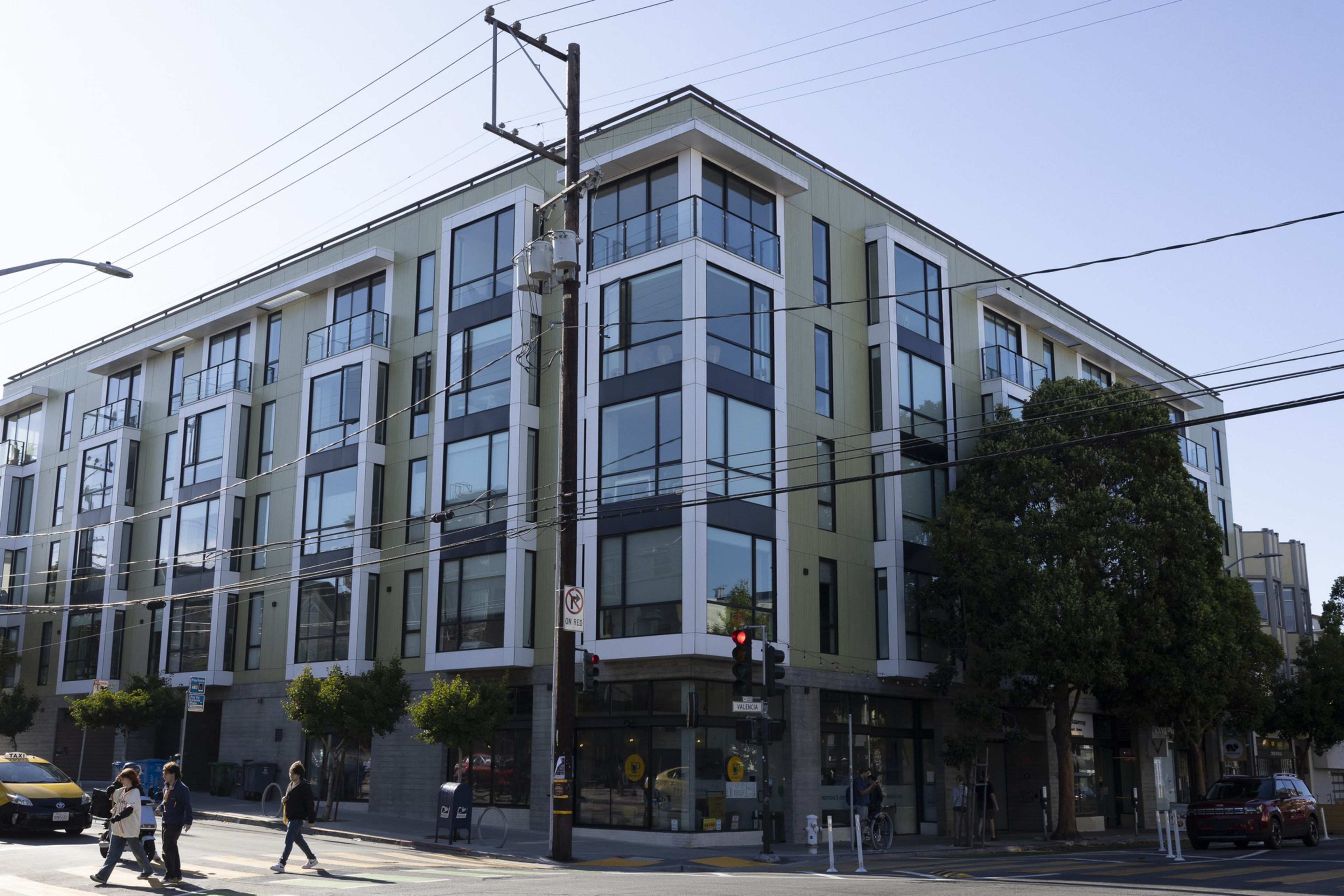Buyers quickly snapped up the 49 condo units at 1188 Valencia St. when they were built in 2018. Even with price tags nearing $1 million, they were an easy sell, since the building is a block from BART and within walking distance to the Mission’s best restaurants and nightlife.
But now, anyone who wants to sell their unit will find that many mainstream lenders are blacklisting the property — thus derailing potential buyers. The reason? The homeowners association is trying to fund repairs by suing the building’s developer.
Unlike with car insurance, where a customer can snap a photo on an app to open a claim, the only way condo HOAs can get their builder to pay for defects under warranty — say, faulty lights or a constantly broken window seal — is to take legal action against them.
This system was set up intentionally. In an attempt to protect consumers from shoddy construction work, California lawmakers in 2002 passed SB 800 (opens in new tab), known as the Right to Repair Act, which outlined 45 categories of defects builders are liable to cover within a specified time.
So, like cicadas in the Midwest, every time a building in California approaches its 10-year lifespan, when most warranties expire, swarms of lawyers spawn to encourage HOAs to sue the builders’ insurance firms. As a result, those condos get flagged by lenders, who are hesitant to loan on properties with outstanding legal or repair issues.
This phenomenon has led to a sharp decline in condo production in the state over two decades, according to a 2024 study (opens in new tab) by UC Berkeley’s Terner Center for Housing Innovation. Since the legal environment in California imposes higher risks on condo developers, they are incentivized to produce more rental properties, rather than condos for sale, the researchers argue. Fewer condos mean fewer affordable and accessible paths to homeownership.
Even though the Right to Repair law was designed to steer most cases away from the courtroom, the mere threat of litigation is enough for government-sponsored lenders Fannie Mae and Freddie Mac to blacklist properties, even if they are structurally sound. Some developers admonish SB 800 as predatory and cite the disruption it has caused in the mortgage industry as harmful to buyers.
“All [SB 800] has really done is give lawyers the ability to latch onto the tiniest of details for profit,” said Chris Foley of Ground Matrix, who specializes in multifamily development. According to these lawsuits, Foley said, every new building can be considered defective once a warranty is set to expire. “How does that make sense?”
Moreover, the researchers at the Terner Center argue, state law doesn’t necessarily incentivize the best outcomes for residents, since lawyers from the insurance companies end up litigating the cost of every line item, which can become a race to the bottom in which quality repairs are bypassed in favor of cheap, quick fixes.
Condo owners, on the other hand, argue that litigating warranty claims is one of the few resources they have — aside from raising HOA fees or taking out a loan — to protect their property’s value for themselves and future owners.
“Every building boom is followed by a trend of defects,” said Rachel Miller of The Miller Law Firm, which represented the HOA at 1188 Valencia St. against its builder last year. “They’re prevalent because it’s hard to build a water-tight building at the intense pace and cost that developers want.”
Miller declined to comment on specifics of the case, but according to property disclosures reviewed by The Standard, the owners of the Valencia Street condos filed a defect claim to builder JS Sullivan in late 2023. Among the issues identified by independent experts were potential damage to the facade, roof, underground garage walls, and entry doors. Fifteen months later, the two sides settled in mediation for $1.8 million, granting the builder full liability release and confidentiality.
In the Bay Area, the pace of construction has fallen dramatically since peaking in 2006, when developers started building more than 8,000 condo units. Since then, there has been no year when the region reached a quarter of that number. Between 2011 and 2021, an estimated 3% of new multifamily homes built in the state were listed for sale rather than rental.
The Terner Center study found that fewer than 10% of California residents of buildings with five or more units own the unit in which they live, while 80% of those in single-family homes own the property.
In San Francisco — where the condo market has been struggling with softer demand — the state’s laws have even seen newer buildings get blacklisted by mainstream mortgage guarantors, making loans more expensive and difficult to obtain.
Fannie Mae and Freddie Mac maintain a confidential nationwide registry of properties deemed too risky to guarantee; for example, those in the Florida neighborhood where beachfront towers collapsed in 2021. The list has grown exponentially in the last four years as a result of disasters, the insurance crisis, and new state laws.
In its latest tally of the nonpublic blacklist, Boston law firm Allcock & Morris counted 19 San Francisco condo properties flagged by Fannie Mae and Freddie Mac. Of these, 14 were cited for pending litigation or deferred maintenance.
The law firm declined to share addresses of the properties on the list, but real estate sources have confirmed that 1188 Valencia St. is indeed one of them.
Miller argues that the blacklist for lending is temporary and that “it’s not impossible to get a mortgage.” Of the construction defect litigation process, she maintained that “these are very commonsense requirements that should be addressed by builders.”
JS Sullivan, which built 1188 Valencia, did not respond to requests for comment. The firm this month opened Renou, an eight-story, 90-unit building in SoMa.

Realtor Danielle Lazier helped a buyer land a one-bedroom condo at 1188 Valencia for $995,000 in 2018, before the legal issues came to light.
But she has seen first-hand the challenges that being on Fannie Mae and Freddie Mac’s blacklist can have on a seller. Recently, a client saw an agreed-upon sale in SoMa briefly derailed because the condo got flagged for an esoteric issue related to homeowners insurance. Eventually, the two-bedroom, three-bath unit sold for more than the asking price after Lazier found another lender willing to underwrite the deal.
Lazier recommended that would-be buyers and their agents pull a condo’s master insurance policy ahead of time and run it by a couple of lenders to get ahead of potential issues. “Many of our buyers do not use Fannie Mae loans,” she said, “but it's important to foresee potential roadblocks to a sale, especially in a tricky market.”
